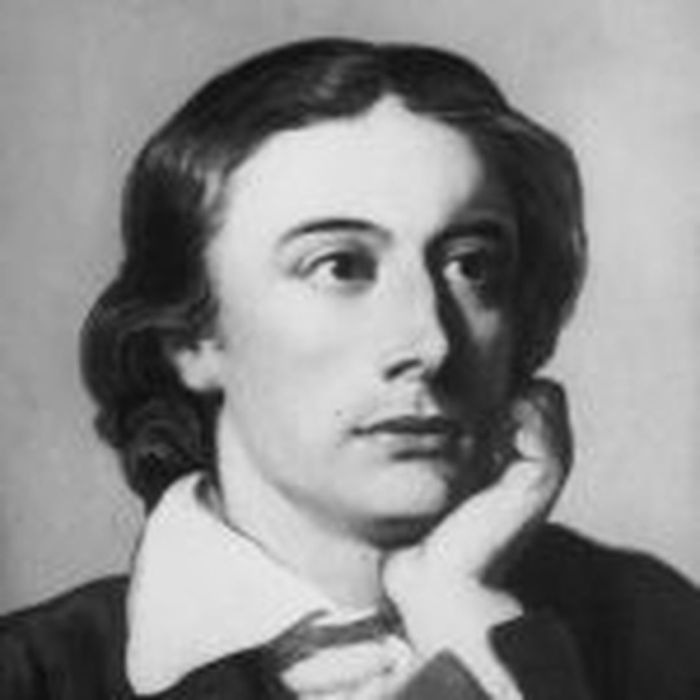To john keats poet at springtime – In this literary expedition, we delve into the captivating world of John Keats’ “Ode to Spring,” a masterpiece that celebrates the arrival of spring and the renewal of life. Keats’ exquisite use of imagery and figurative language paints a vivid and evocative portrait of the season, inviting us to experience its beauty and wonder anew.
Beyond the poem’s enchanting imagery, we explore Keats’ life and influences, tracing the origins of his poetic genius. We examine the impact of classical mythology, the Romantic movement, and the works of William Shakespeare on his writing, revealing the profound influences that shaped his unique style and themes.
Literary Analysis of John Keats’ “Ode to Spring”

John Keats’ “Ode to Spring” is a vibrant celebration of the season’s arrival and its transformative effects on nature and human consciousness. The poem explores themes of renewal, joy, and the interconnectedness of all living things.
Central Themes
Keats’ ode to spring celebrates the season’s ability to rejuvenate and inspire. The poem describes the awakening of nature after winter’s dormancy, with vivid imagery of blooming flowers, singing birds, and dancing nymphs. Through these images, Keats conveys a sense of hope and optimism, suggesting that spring is a time for renewal and rebirth.
Imagery and Figurative Language
Keats’ use of vivid imagery and figurative language creates a multi-sensory experience for the reader. He employs metaphors, personification, and sensory details to evoke the sights, sounds, smells, and textures of spring. For example, the “soft incense” of flowers and the “melodious noise” of birds create a rich tapestry of sensations that immerse the reader in the beauty of the season.
Structure and Rhyme Scheme
The poem’s structure and rhyme scheme contribute to its overall impact. It is written in four stanzas, each consisting of ten lines in iambic pentameter. The regular rhythm and rhyme scheme create a sense of harmony and order, which complements the poem’s themes of renewal and rebirth.
John Keats’ Life and Influences: To John Keats Poet At Springtime

Biography
John Keats was born in London in 1795. His early life was marked by tragedy, as both his parents died when he was young. Keats pursued a medical career before turning to poetry full-time. His brief but prolific literary career was cut short by tuberculosis, and he died in Rome in 1821 at the age of 25.
Major Influences
Keats’ writing was influenced by a wide range of sources, including classical mythology, the Romantic movement, and the work of William Shakespeare. His study of Greek mythology provided him with a rich source of imagery and themes. The Romantic movement’s emphasis on emotion, imagination, and the individual also played a significant role in shaping Keats’ poetry.
Personal Experiences
Keats’ personal experiences, including his own struggles with illness, also shaped the themes and style of his poetry. His experiences with love, loss, and mortality informed his writing, giving it a depth and poignancy that resonates with readers to this day.
The Romantic Movement and John Keats
Characteristics of Romanticism
Romanticism was a literary movement that emerged in the late 18th century. It emphasized emotion, imagination, and the individual, as well as a celebration of nature and the supernatural. Romantic poets sought to break away from the rigid rules and conventions of neoclassicism, and their work often reflected a sense of wonder and awe at the natural world.
Keats and Romanticism
Keats’ poetry exemplifies the ideals of Romanticism. His celebration of nature in poems like “Ode to a Nightingale” and “Ode to Autumn” reflects the Romantic emphasis on the beauty and power of the natural world. His exploration of human emotions and experiences in poems like “Ode on a Grecian Urn” and “When I Have Fears That I May Cease to Be” demonstrates the Romantic focus on the individual and the human condition.
Comparison to Other Romantic Poets, To john keats poet at springtime
Keats’ work can be compared to that of other Romantic poets such as William Wordsworth and Samuel Taylor Coleridge. While all three poets shared a love of nature and a focus on the individual, Keats’ poetry is often more sensuous and lyrical than that of his contemporaries.
His use of vivid imagery and rich language sets his work apart from other Romantic poets.
John Keats’ Legacy and Impact

Critical Reception
Keats’ poetry received mixed reviews during his lifetime. Some critics praised his originality and lyrical genius, while others criticized his lack of polish and structure. However, after his death, Keats’ reputation grew steadily, and he is now considered one of the greatest English poets.
Influence on Subsequent Poets
Keats’ work has had a profound influence on subsequent generations of poets. His use of imagery and language has inspired poets such as Alfred, Lord Tennyson, and W.B. Yeats. His exploration of themes such as beauty, mortality, and the human condition continues to resonate with readers and writers alike.
Contemporary Relevance
Keats’ poetry continues to be relevant today, as it offers insights into the human experience that are both timeless and universal. His exploration of themes such as love, loss, and the search for meaning in life speaks to readers of all ages and backgrounds.
Common Queries
What is the central theme of Keats’ “Ode to Spring”?
The central theme of the poem is the celebration of spring and the renewal of life.
How does Keats use imagery and figurative language in the poem?
Keats uses vivid imagery and figurative language to create a sensory experience of spring, evoking its sights, sounds, smells, and textures.
What is the significance of the poem’s structure and rhyme scheme?
The poem’s structure and rhyme scheme contribute to its musicality and emotional impact, enhancing the reader’s experience of the poem’s themes.